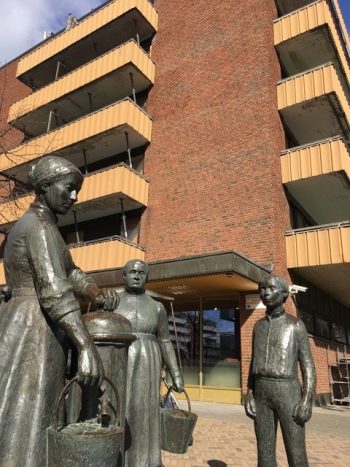The numbers of Ukrainian refugees arriving in Norway has declined, allowing police to catch up on refugee registration and shorten long waiting times. Many refugees still face poor living conditions at hastily set-up asylum centers, leaving some children hungry and their mothers in tears.

Norwegian immigration agency UDI (Utlendingsdirektoratet) was simply unprepared for the thousands of mostly women and children fleeing Ukraine after the Russian invasion in late February. While many could move in with relatives already in Norway, the vast majority had to go through the national refugee arrival center in Råde near Fredrikstad. It was quickly filled beyond capacity and involved a long registration process that has now finally been shortened. More than 4,000 were stuck on long waiting lists in March.
Then many of the refugees were met with poor living conditions bordering on squalid. Around 200 refugees were sent to the former Hvalsmoen military base near Hønefoss, where newspaper Dagsavisen reported dirty kitchens and living quarters, signs of mice and mildew, and even a lack of food and necessary supplies. One woman showed reporters, also from state broadcaster NRK, a cardboard box given to her that contained a loaf of bread, some raw potatoes, two onions, milk and a few eggs. That was supposed to feed her and her family for three days.
‘Shameful’
Still others were sent to shabby barracks in industrial areas, in some cases housing once used by construction workers. Children were left to play in dusty parking lots adjacent to railroad tracks. “This is shameful,” one local city politician, Rashid Nawaz of the Labour Party, told Dagsavisen. Local officials blame UDI, which in turn had dealt out refugee housing responsibility to a private firm ironically called “Hero,” which in turn has claimed they were only given a week or two to find housing for thousands of people and are doing the best they can.
Some refugees were and still are being at least temporarily housed in local hotels that have been taken over for the purpose of getting a roof over their heads. They’re later relocated to the makeshift refugee camps being set up around the country, with widely varying standards. Local humanitarian organizations and private individuals are also mounting refugee aid in the form of food, clothing, toys and treats for children and basic personal hygiene supplies. Much of that is supposed to be provided through UDI and its subcontrators.
‘Sorry’
After initially defending the standards at the refugee centers, Hero director Vidar Torheim apologized for failing to do better. “Our service has been too poor and we are sorry for that,” Torheim told newspaper VG. “Conditions should not be dirty or unhealthy at our reception centers. We must deliver acceptable living conditions. We are addressing that and will put things in order.”
UDI has also admitted that “there have been holes” in its services for the nearly 14,000 Ukrainians now in Norway. Borghild Fløtre, in charge of reception and return of refugees at UDI, said that everyone has a right to receive clothing and a package of personal care items, necessary medicine and clean and safe housing. “If that’s not provided, it’s important that problems be reported to us so we can follow up,” Fløtre said at a press briefing. UDI is paying around NOK 650 (USD 75) per day per refugee to the refugee care providers, and isn’t satisfied either.

In Oslo, meanwhile, city officials are scrambling to house around 2,000 Ukrainian refugees assigned to the capital so far. They’re planning to use city-owned property that’s currently standing empty, including a former nursing home in the city’s Gründerløkka district and an apartment building at Tøyen formerly used to house welfare clients.
Rina Mariann Hansen of the Labour Party, in charge of social services and integration, said the city will spend NOK 300 million to improve and make the old buildings ready to receive refugees. Questions are flying, however, as to how that can be done quickly enough to house people arriving now. The situation has also raised questions over how Oslo’s Labour-Greens led government has allowed city property to stand vacant and deteriorate for years on end. In the case of the Tøyen property, welfare residents were controversially evicted shortly after Labour won government power in Oslo in 2015. The building has been standing vacant every since.
Some refugees have been much luckier, arriving early and being offered housing in nearly idyllic towns around the country. Norwegians from outside Bergen in the west to Stathelle on the coast south of Oslo are among those offering their own rental properties, small apartmetns within their own homes or even their holiday homes through local authorities for use as housing for Ukrainian refugees. Many Ukrainian children are already attending local schools and their mothers are being offered jobs, while nearly 4,000 have received medical care.
“We lived and worked in Kyiv as usual until the last day before the war started, and never really believed this would happen,” one woman now living in Stathelle told Dagsavisen. “That big Russia would invade little Ukraine … weren’t they already big enough?” She said they had good lives, but now need to start over, in Norway.
newsinenglish.no/Nina Berglund

